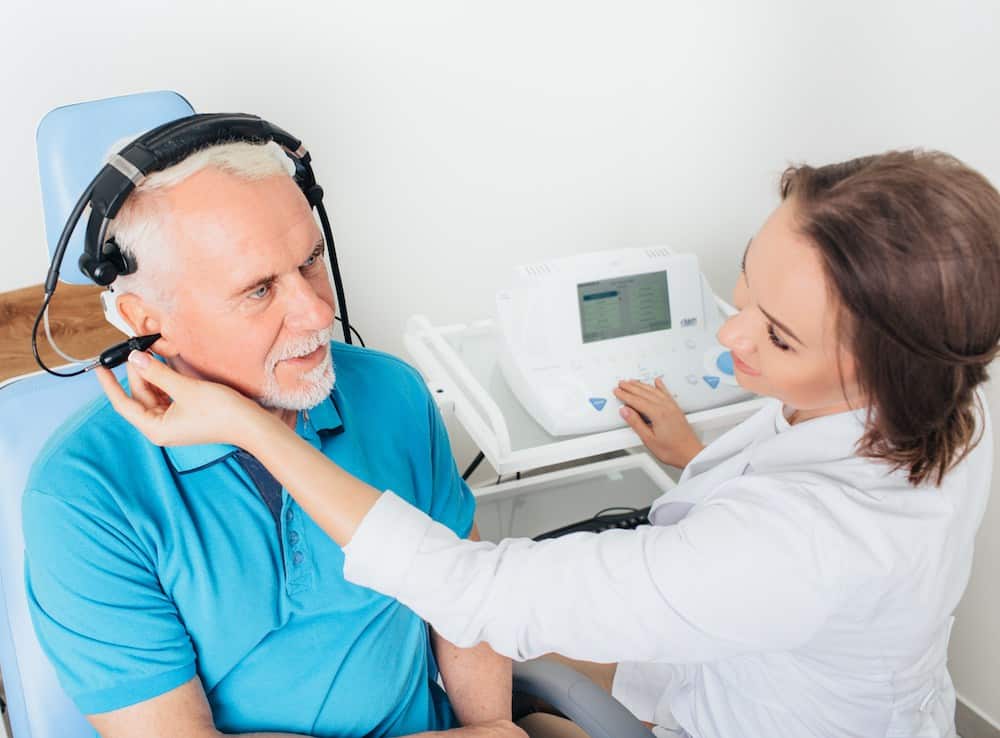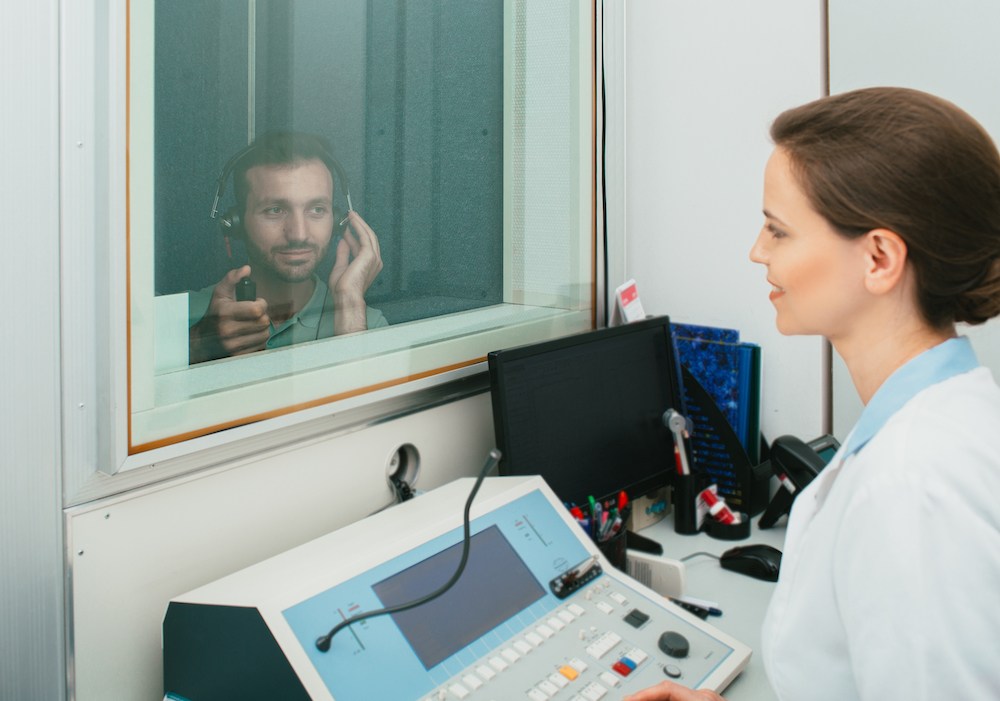The Impact of Hearing Tests on Quality of Life
Your hearing connects you to nearly everything in your daily life, from

By: admin | October 30, 2024
Hearing loss can sneak up on you when you least expect it. One moment, you’re enjoying a conversation with friends during a busy weekend gathering, and the next, you’re struggling to catch every word amidst the laughter and chatter. This gradual decline in hearing can significantly impact your social interactions and daily life. Regular hearing tests are vital for identifying hearing loss early on, allowing you to take proactive steps toward better communication.
Audiologists employ various techniques to assess your hearing health, with speech audiometry being a critical component of the evaluation process. This test focuses on your ability to comprehend spoken words and phrases, providing valuable insight into how well you can follow conversations in everyday situations. Understanding your speech recognition abilities helps audiologists tailor effective hearing solutions that enhance your listening experience. By gaining a clearer picture of your hearing capabilities, you can take proactive steps toward maintaining better communication and connection with the world around you.
Speech audiometry plays a vital role in hearing tests. This assessment tool doesn’t just identify hearing loss, but it also evaluates your ability to understand speech. This understanding is key in determining how hearing loss impacts your daily communication and overall quality of life.
Understanding speech isn’t just about hearing sounds, but interpreting them correctly too. By examining how well you can recognize and repeat words or sentences at different volumes, speech audiometry provides a detailed picture of your auditory health. With this information, your audiologist can tailor a treatment plan that best suits your needs and lifestyle. So, when you’re due for a hearing test, know that speech audiometry is an essential part of the process that plays a significant role in improving your auditory health.
This assessment starts with you wearing headphones or earphones connected to an audiometer. The audiologist will then play a series of words or sentences at different volumes, and your task is to repeat them back. This allows the specialist to gauge not only your ability to hear sounds but also your capacity to understand speech.
The test involves two key components: determining your speech recognition threshold (SRT) and assessing your speech discrimination score (SDS). The SRT refers to the softest level at which you can recognize and repeat speech 50% of the time, while SDS measures how accurately you can understand common words at a comfortably loud level. These elements combined give an in-depth view of how hearing loss affects your speech comprehension.
Now, as with any evaluation, there are pros and cons associated with speech audiometry. On the plus side, it provides valuable insights into how well you understand speech, which is crucial for tailoring effective treatment plans. It also helps identify any potential issues that might be affecting your ability to comprehend spoken language. However, it’s worth noting that the test’s accuracy can be influenced by factors like background noise or if English isn’t your first language. Additionally, since it relies on subjective responses, its effectiveness may vary based on individual concentration and cooperation during the test.
These are two critical aspects of hearing tests that help hearing health professionals understand the extent and nature of your hearing loss. In simple terms, these thresholds represent the quietest sounds you can hear at different frequencies or pitches.
Understanding your pure tone and speech thresholds is crucial because it helps paint a more detailed picture of your auditory health. It’s not just about how loud a sound needs to be for you to hear it, but also how well you can understand speech at those levels. This information is vital for your audiologist as they formulate a treatment plan that caters specifically to your needs.
Here are some useful tips: Always ensure you’re in a quiet environment during these tests for accurate results. Don’t hesitate to ask your audiologist any questions or share any concerns about the process – they’re there to help! And remember, understanding these thresholds is an important step towards managing your hearing loss effectively.
Next, we focus on a key component of speech audiometry, the speech recognition threshold (SRT). This term might seem complex at first glance, but it’s actually quite straightforward once you understand its role in assessing your hearing capabilities.
The speech recognition threshold, or SRT, is the quietest level at which you can recognize and repeat speech about half the time. This doesn’t just involve hearing sounds – it’s about understanding them. The SRT test plays an integral part in painting a comprehensive picture of your auditory health.
So why is understanding your SRT important? Well, knowing this threshold helps your audiologist determine the severity of your hearing loss and how it affects your ability to comprehend speech. This information is crucial when creating a personalized treatment plan that will best suit your needs and lifestyle. In essence, understanding the concept of SRT empowers you in managing your hearing loss effectively.
As we continue our discussion, let’s turn to another critical aspect of hearing tests: the Most Comfortable Loudness Level (MCL). This term refers to the volume at which you find speech to be most pleasant and easy to understand. It’s not too soft that you struggle to hear, nor too loud that it becomes uncomfortable.
Understanding your MCL is vital in tailoring a hearing care plan that optimizes your listening experience. By knowing this level, your audiologist can adjust your hearing aids or other assistive devices to match this optimal volume. So next time you visit your hearing clinic, don’t forget to ask about your MCL – it could make all the difference in enhancing your communication abilities!
As we move forward in our discussion on speech audiometry, let’s highlight an often overlooked but crucial aspect: the Uncomfortable Loudness Level (UCL). The UCL is the volume level at which sound becomes too loud and causes discomfort. It’s a critical factor in understanding your hearing capabilities and tailoring a personalized hearing care plan.
Next, let’s focus on word recognition scores (WRS). These scores provide a measure of how well you can understand speech when it’s loud enough for you to hear comfortably. WRS is a crucial part of the speech audiometry test and plays a significant role in understanding your hearing health.
Word recognition scores are determined by having you repeat back a list of words that are presented at a comfortable volume level. The percentage of words you correctly repeat back gives your word recognition score. This score offers valuable insight into how hearing loss affects your ability to comprehend speech, even when the volume is adequate.
Knowing your word recognition score is vital as it helps your audiologist understand the nature of your hearing loss better. With this information, they can create an effective treatment plan tailored specifically for you. Understanding WRS is another important step towards managing and improving your hearing health effectively.
After undergoing a speech audiometry test, deciphering the results can seem like a daunting task. But don’t worry – it’s simpler than you might think. The results offer valuable insights into your hearing capabilities, which is a big advantage. However, it’s important to bear in mind that factors like background noise or language familiarity can influence the accuracy of these results.
Your speech audiometry findings are like pieces of a puzzle that, when put together, provide a comprehensive picture of your hearing health. Just as a mechanic uses diagnostic tests to understand what’s happening under the hood of your car, specialists use your speech audiometry results to understand what’s happening with your hearing. They examine these findings meticulously to determine the best course of action for managing your hearing loss.
The speech recognition threshold (SRT) and speech discrimination score (SDS) are two key elements that play a significant role in this analysis. Your SRT gives an indication of the softest level at which you can recognize and repeat speech 50% of the time. On the other hand, SDS measures how accurately you can understand common words at a comfortably loud level.
Together, these insights allow specialists to tailor treatment plans that cater specifically to your needs and lifestyle. It’s similar to how a tailor uses precise measurements to create clothes that fit perfectly – no two treatment plans are exactly alike because no two people have exactly the same hearing capabilities or lifestyles. The goal is always to optimize your ability to communicate effectively and improve your overall quality of life.
If your hearing test reveals that you have hearing loss, the next steps involve exploring suitable solutions tailored to your specific needs. One of the most common and effective options is selecting a hearing aid. Your audiologist will guide you through the various styles and technologies available, ensuring you find a device that fits comfortably and suits your lifestyle. Factors like the severity of your hearing loss, your personal preferences and your daily activities will all play a role in this decision-making process.
Once you’ve chosen a hearing aid, your audiologist will program it to match your unique hearing profile. This involves calibrating the device based on the results of your hearing test, ensuring that the amplification and sound processing features align with your specific requirements. Many modern hearing aids come equipped with advanced technology that can be adjusted for different environments, providing optimal sound quality whether you’re in a quiet room or a bustling restaurant.
Additionally, follow-up appointments will be scheduled to fine-tune the settings and address any concerns you might have as you begin to adjust to your new hearing aid, ensuring a seamless transition into improved hearing and communication.
Understanding the process of speech audiometry is a significant stride towards managing your hearing health effectively. The insights gained from these tests are instrumental in tailoring a treatment plan that suits your unique needs and lifestyle. Don’t hesitate to take this knowledge to the next level by consulting with a professional.
At EarTech Audiology, we’re committed to helping you understand and manage your hearing loss. You can reach our Ogden, Brigham City and Farr West, Utah offices at: (866) 464-1008.
Tags: pure tone testing, speech tests

Your hearing connects you to nearly everything in your daily life, from
By: admin | October 20, 2025

Summer puts your hearing aids through different challenges than the rest
By: admin | July 29, 2025

Many people notice gradual changes in their hearing but don’t think
By: admin | June 20, 2025
